Blog
How to Make Brazilian Funk
14 Jul '2025
Get right into the nitty-gritty, favela-born genre of Brazilian Funk and set yourself on the way to making the dancefloor quake

Credit: Murilo Fonseca on Pexels
Similar to Hip-hop being a street-made music genre from The Bronx in New York, Brazilian Funk (aka, Funk Carioca) is raw and uncut from the favelas of Rio De Janeiro. Expressed through the often impoverished underbelly, Brazilian Funk carries with it an unapologetic and hard-hitting sound meant to make statements and set precedents.
So, whether you’re delving into the genre for the first time, or a regular producer looking to up their game, this article is for you. Learn the fundamentals of the genre, as well as some neat tips and tricks on how to seriously fast-track your workflow so that you’ll be boshing out the next Brazilian Funk hit record in no time at all!

Credit: 4FLY RJ
On that note, if you’re specifically looking to increase your efficiency in the studio, check out our 9 Workflow Tips to Help You Produce More Tracks and 7 Simple Techniques for Writing Better Melodies.
Step 1: Select a riveting bass
If you’ve listened to any Brazilian Funk whatsoever, you’ll be well aware that a funky, yet futuristic 808 bass is a key ingredient. So, that’s what we’ll be starting with. You don’t have to begin with the bass but it's a nice foundation to develop the groove, paving the way for the rest of the track.
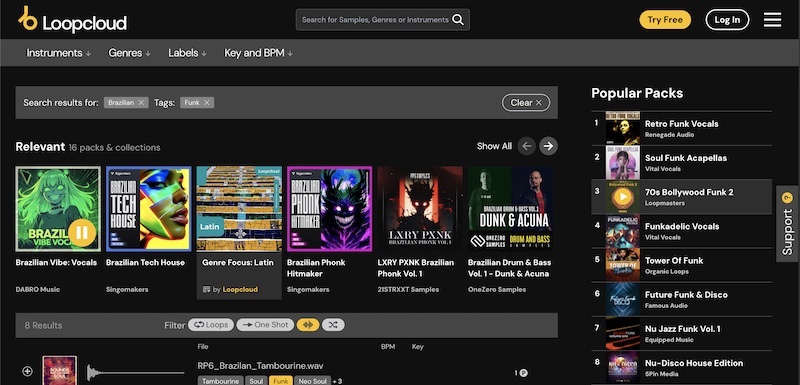
Throughout this tutorial, we’ll be using Loopcloud Sounds as our go-to sample library and browser. Loopcloud Sounds is a highly useful tool for producers of all shapes and sizes, allowing you to quickly find relevant samples of any type, tempo, genre or key, directly from within your DAW. You’ll have pretty much instantaneous access to over 4 million samples from the Loopcloud database, locked and loaded at your disposal. Check out our current pricing and free trial options to get started.
So, once you’ve installed Loopcloud Sounds and scanned it as a plugin from within your DAW, go ahead and open it up to begin searching for a suitable bass sample. We can apply search filters by typing into the search bar. We’re going to search for ‘Brazil bass’, then look for samples that are already at 130 bpm to see if they’re suitable.
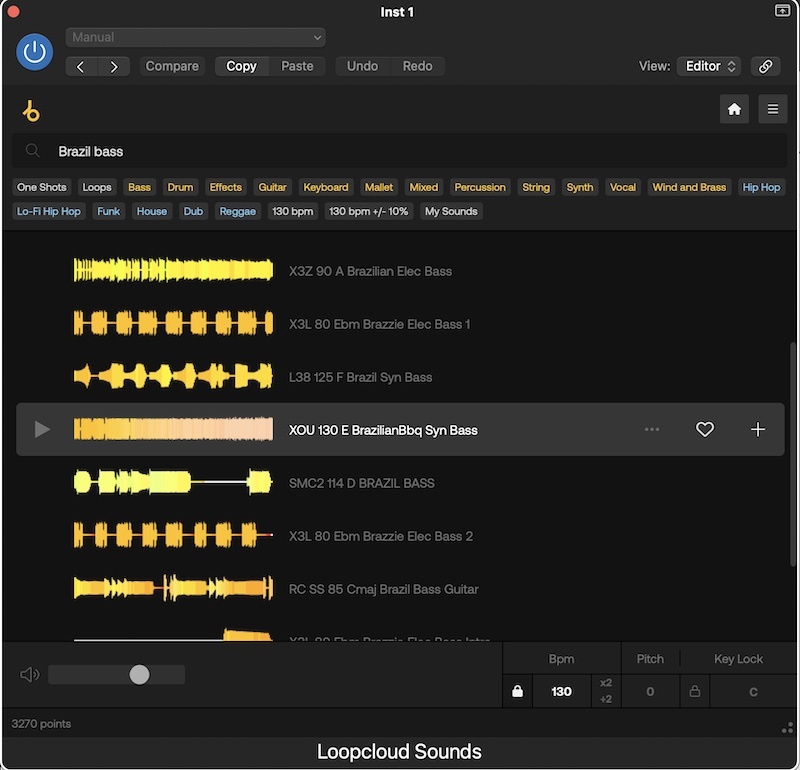
You can audition a sample by either left-clicking the soundwave graphic, or by hitting the play button in the left-hand side column. You can also add samples to your favourites by clicking the heart symbol in the right-hand side for the display. Once you’ve settled for a bass loop, you can click the ‘+’ button on the right-hand side (next to the heart) and use Loopcloud credits to add it to your library. Finally, we can click and drag the sample into our DAWs playlist.
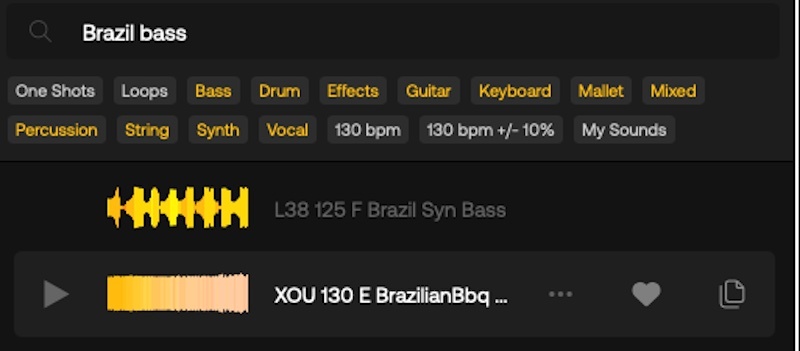
In the Loopcloud Sounds browser, you can set your tempo and key using the BPM and Key Lock sections in the bottom-most panel. It’s a good idea to set these before adding your next sample – because Loopcloud Sounds has a neat feature, automatically pitch-matching any sample to the specified tempo and key.
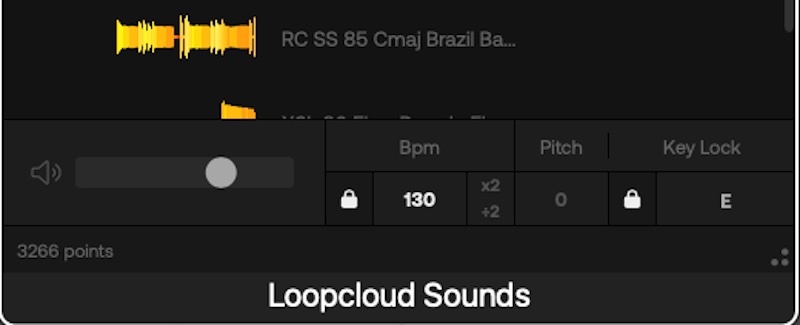
Step 2: Tamborzão drums
The acclaimed tamborzão percussion rhythm is like the signature heartbeat of the favelas and it’s perhaps the most integral component to the Brazilian Funk genre. So, naturally, we’re going to find a drum/percussion loop sample (or combine a few) that matches the groove of our bass.
So, head back to the search bar of your Loopcloud Sounds browser and see if you can apply some filters to narrow down your search and locate some suitable tamborzão drums and percussion. If you’re not familiar with the tamborzão percussion loop, check out the video below to get an ear for how it sounds.
Naturally, samples around the 130bpm mark when looking for Brazilian drums will usually carry the tamborzão rhythm. As you can see from the screenshot below, we managed to find many Brazilian Funk drum loop samples by searching simply for ‘Brazilian percussion’. Once you’ve found a loop or two that you’re happy with, go ahead and add them into your DAW, with your bass.
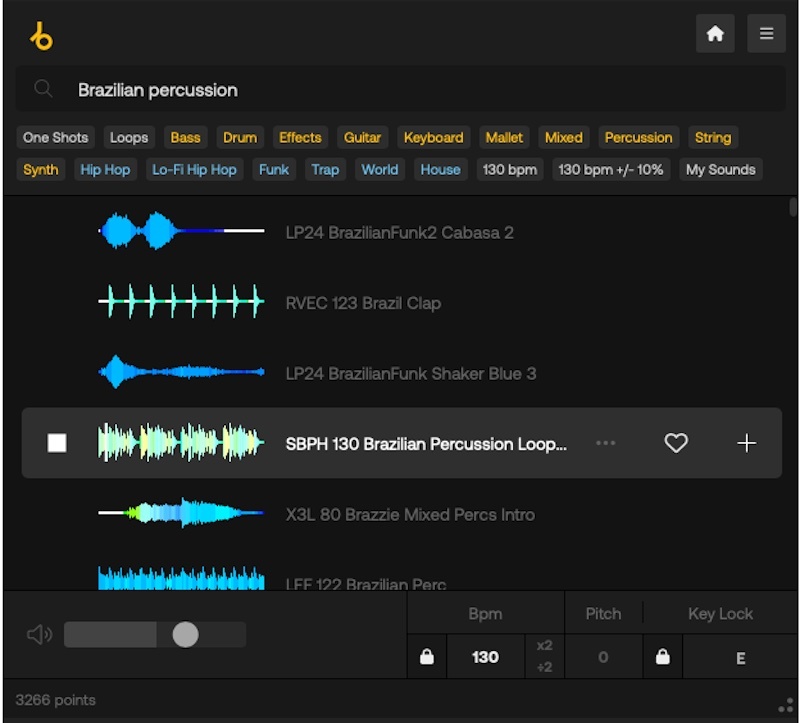
Remember, if combining loops, try to flesh out a full drum kit, by maybe choosing two juxtaposed loops. For example, one containing a snare and shakers, and another with a kick. If dedicated enough and familiar with the tamborzão pattern, you can even try building a drum kit yourself, using one-shot samples, and composing your own pattern in your favourite drum machine.
Step 3: Creating a lead melody
Now that we have the bread and butter of our Brazilian Funk track, let’s try to add in a melodic element. You could even go the extra mile and find some chords to throw in at this stage too. Although, for simplicity’s sake, we’ll just showcase the melody composition here.
Brazilian Funk is more known for its hard hitting bass and drums so you don’t need to get too complex when it comes to melody, yet it’s nice to add a lead or something for a bit of texture and depth.
We’re going to be searching for a one-shot synth sample in Loopcloud Sounds and writing our own melodic layer in Logic Pro’s Piano Roll. You can also use the Piano Roll (or equivalent) within whatever DAW you’re using. Let’s navigate back to Loopcloud Sounds and search for a lead, with the One Shots filter applied.
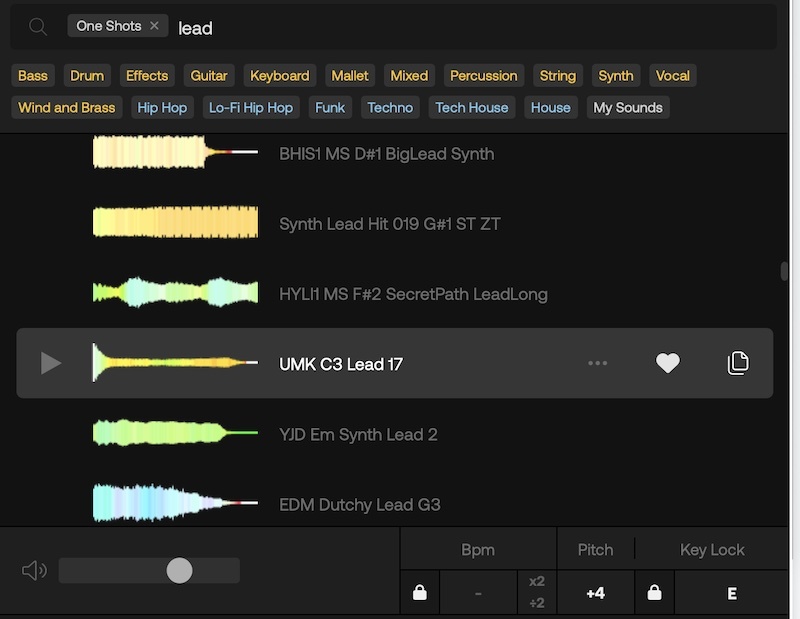
Then, open up your favourite sampler (your DAW should have a native sampler tool you can use) and load in your selected one-shot sample. We’re going to be using Logic Pro 11’s Quick Sampler. You can then set your Polyphony to 1 if you don’t want each successive note to play over the top of the previous note.
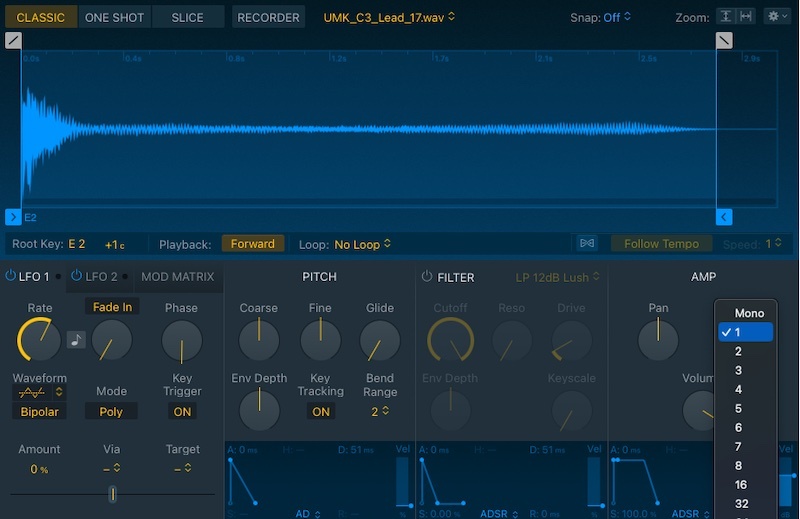
Once satisfied with your sampler settings, you can go ahead and record in your melody, using a MIDI controller, or your computer keyboard. The process for using your keyboard as a MIDI controller is different in each DAW, but you should be able to find out how through a quick Google search. You can then adjust the Velocity and Quantization of each note if you wish.
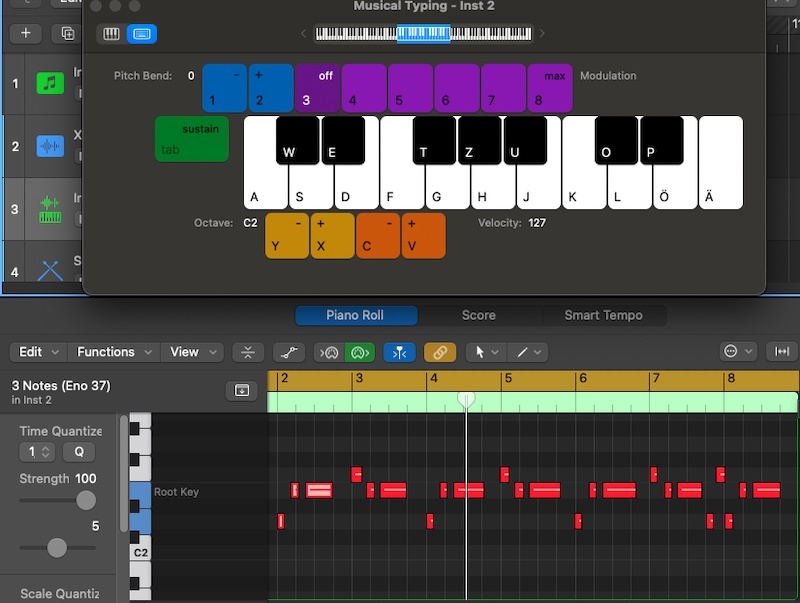
We’re going to assume you’re knowledgeable enough to handle this step, however, if not, don’t worry, you can always find a suitable melodic/chord sample (or both) by searching for loops in the same method we used in steps 1 and 2 to find our bass and percussion loops.
Step 4: A Portuguese vocal sample
The last element we need to add in order to really give it that Rio de Janeiro flare is some Brazilian Portuguese vocals. For this step, we’re going to be using Loopcloud Sounds to find a suitable sample that we can layer into our mix. However, you’re more than welcome to get creative and write and record your own lyrics (if you know Portuguese), or find a friend to help!
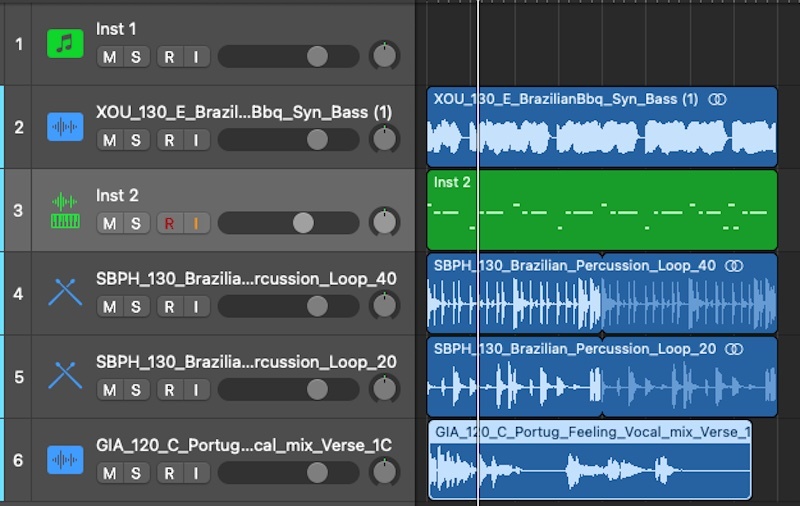
Once you’ve added your Portuguese vocal to the track, you’ve successfully finished this tutorial and built a solid foundation for a full-fledged Brazilian Funk record. It’s now time to Finish Your Track, sequencing it, getting creative with implementing some risers, downers and establishing each section to take the listener on a musical journey. For that part, we’ll leave the creativity in your hands.
We hope you’ve learned a thing or two in this tutorial and feel more confident in your Brazilian Funk productions. Remember, practice makes perfect and it’s down to you to keep making use of your sonic paint pallet to truly innovate and push the genre forward.
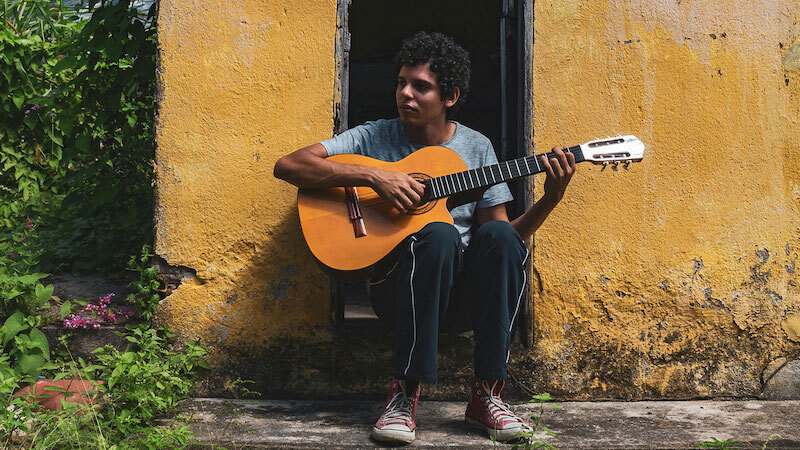
Credit: Williamis Cesar
While you’re producing Brazilian Funk…
Brazilian Funk is derived from genres like Miami Bass, Afrika Bambaataa, and electro-funk, with the local flavour of Brazilian Portuguese vocals and the tamborzão beat—that heavy, stripped-back 808 rhythm that became iconic. If you want your Brazilian Funk productions to stand out, we recommend becoming more than acquainted with its influential genres and signature sounds.
At its heart, Brazilian Funk is an electronic dance genre, so it has a diverse listener base with mass appeal. That’s partly why it’s seen such an influx in popularity over the recent years. With that being said, the genre also stays true to its roots, serving as a voice for the voiceless and sparking inspiration for political lyrical themes and dark subgenres, appealing to perhaps a smaller demographic. It’s important to consider which type of contribution you’d like to make and to stick with the genre’s integrity.
FAQs
Is Brazilian Funk the same as Phonk?
Although they have a similar name and some similarities between them, both genres are quite different. Phonk originated in Memphis, United States with a dark and gritty feel. Brazilian Funk generally has a more laid-back vibe, suitable for parties and with a signature tamborzão rhythm and portuguese lyrics.
Who created Brazilian Funk?
Funk Carioca (Brazilian Funk) originated in the 1980s by DJs and producers getting experimental with electronic drum machines after Miami Bass first hit the favelas. DJ Marlboro is widely recognised and regarded as one of the most influential pioneers of the genre after playing a crucial role in developing the sound, incorporating his own songwriting.
DJ Marlboro would go on to release his Funk Brasil album in 1989, cementing his status as one of the godfathers of the genre.
What bpm is Brazilian Funk?
Brazilian Funk can range anywhere from 120-150 bpm, with 130 being the typical sweetspot. The faster paced Funk Carioca (140-150 bpm) was explored by DJs Polyvox and Rennan da Penha, pushing the envelope of the genre further than its predecessors. In modern day, fans can enjoy a wide range of tempos within the one genre.
Why is Brazilian Funk so good?
Brazilian Funk has made such a name for itself and risen in popularity because of its wide appeal. The unique euphoric rhythms built from compelling percussion, over groovy and harmonious instrumentation make it a standout genre.
The extra appeal lies within the unapologetic lyrics set forth by many previously voiceless emcees looking for a way to speak their truth. Funk Carioca was destined to become the vehicle for their truth, allowing the music to resonate far and wide.

